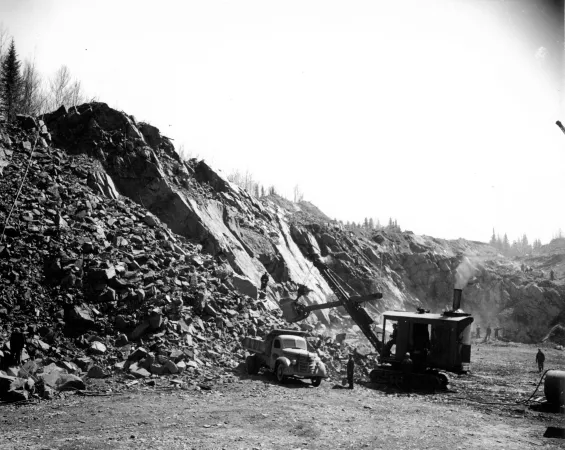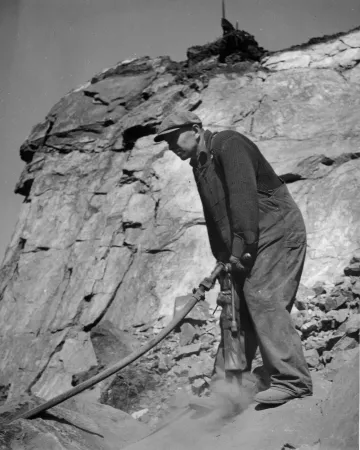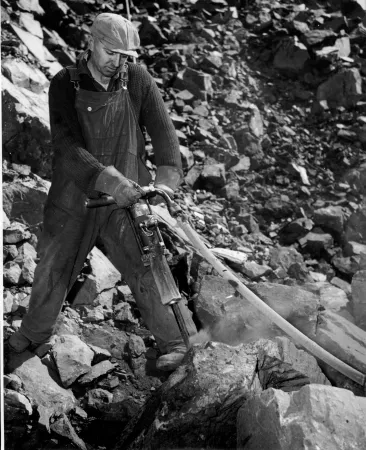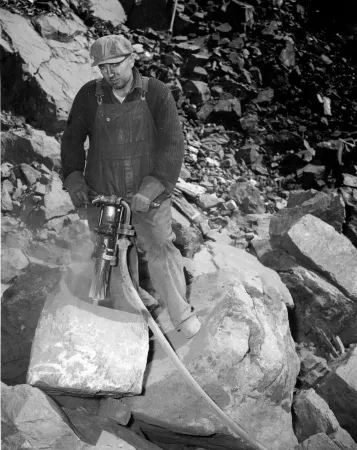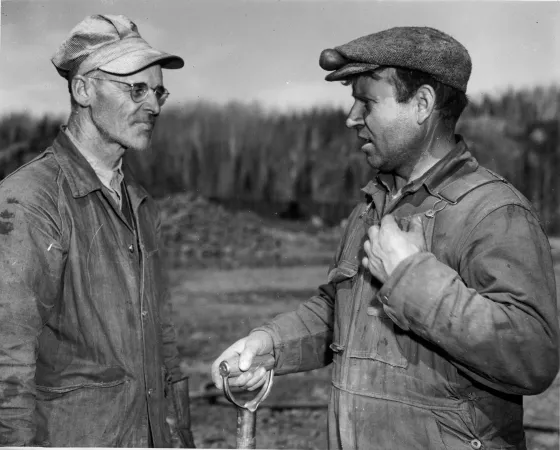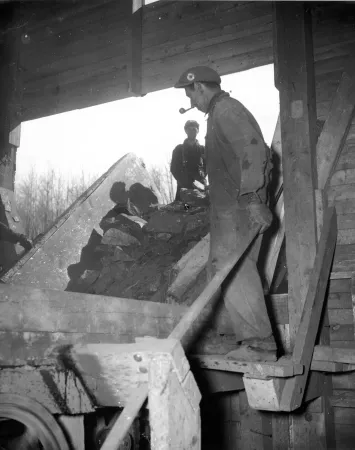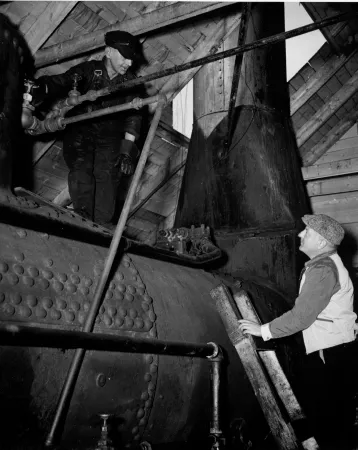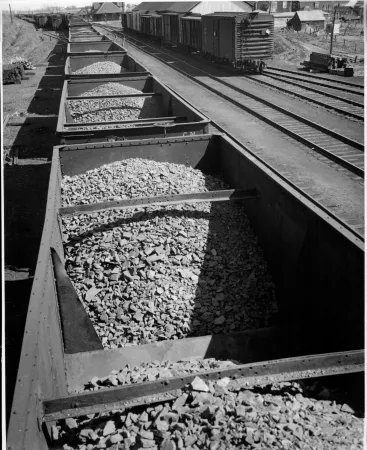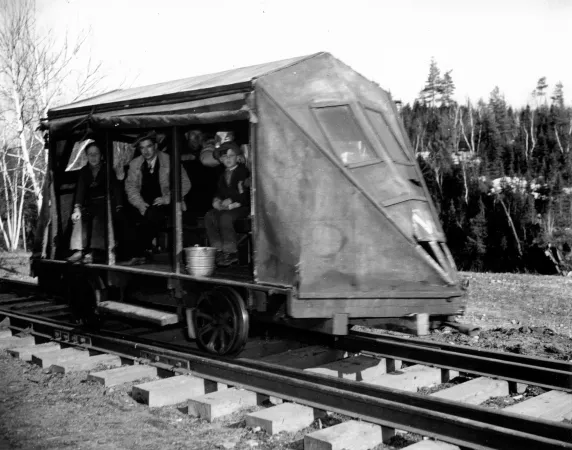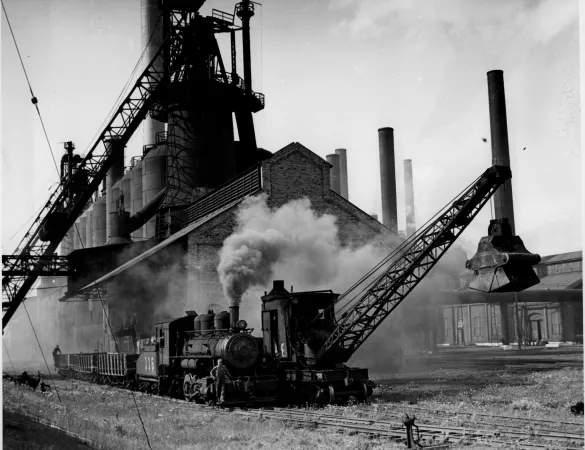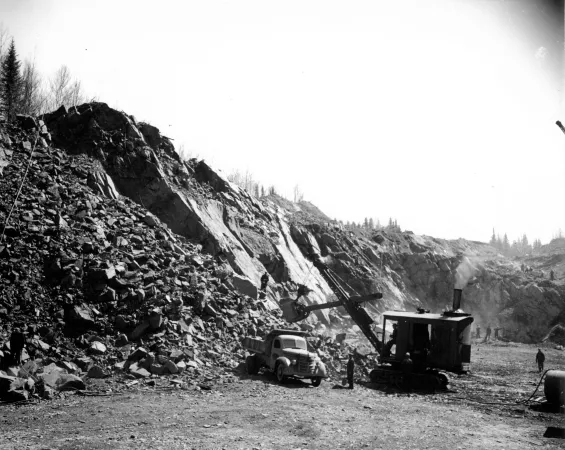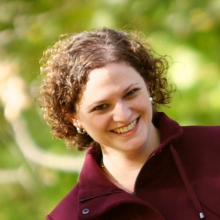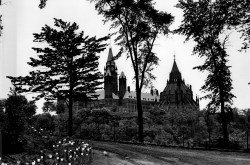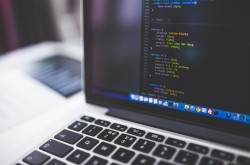Digital Archives: The iron ore crisis in Bathurst, New Brunswick

In honour of Archives Awareness Week (April 2-8), Ingenium is highlighting a few gems taken from our digital collection. The captions displayed here are the original text.
During the Second World War, iron was a vital commodity for ship building, as well as rails, guns, and munitions manufacturing. Raw ore was shipped from Little Bell Island, Newfoundland, among other mines, to Sydney, Nova Scotia, where it was made into steel. In September 1942, two ships waiting to be filled with ore were sunk, and the loading docks on Little Bell Island destroyed by a German submarine.

Breaking up large blocks of iron ore blasted from the face of a hill in Eastern Canada with an air drill, so it will pass through the crusher.
The Department of Munitions and Supply moved quickly to find new ore supplies and routes. One site was an old ore mine near Bathurst, New Brunswick, next to the CN Rail lines. Originally closed in 1913, the Drummond Iron Mine was reopened in December 1942, and the settlement nearby renamed Bathurst Mine.
The mine was an open pit operation run by the Dominion Steel and Coal Company, on a lease from Canadian Iron Foundries. Between February and December 1943, men blasted the walls of the pit and sifted rocks for shipment to Sydney. Unfortunately, the ore was bad quality, and the mine was closed in favour of better sources found in the US.

This photograph shows drillers at work on the face of an entire hill of ore. These drilling machines drill holes in the face of the hill after which a charge of dynamite is inserted. The charge is exploded and a steam shovel then gathers up the ore which has been blasted from the face of the hill for crushing to proper size and loading into railway cars and then transported to the steel mills at Sydney.
In the early 1950s, however, samples taken from the mines were discovered to be rich in sulphur and lead—minerals important to industries in the region up until the early 1980s. Ironically, the high sulphur content was one of the reasons the rock was poor for steel production.
This photograph series became part of the Canada Science and Technology Museum’s archival collections when CN Rail donated their massive photograph inventory to the museum in 2000. These images were featured in an October 1943 edition of Canadian National Magazine, and the captions displayed here are the original text.


